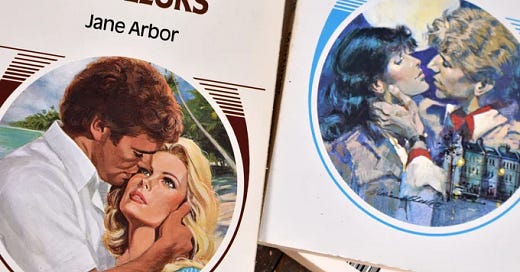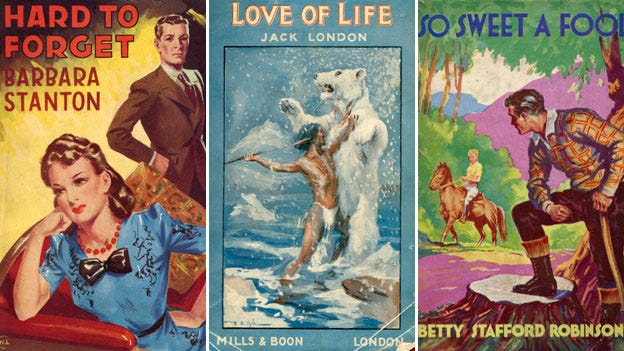Romance readers can be found all over the world, yet the majority of romance writers are concentrated in North America and the United Kingdom. This isn't entirely surprising, given that the genre began with British writers and American capitalists. However, the market has expanded significantly since then. Romance is now the top-selling literary genre in Portugal, Spain, France, Hungary, Greece, Brazil, and South Africa. To stay competitive, major publishing houses have established offices in all key markets. Despite this global presence, the international market remains dominated by English-translated novels, with relatively little emphasis on showcasing local talent.
Back to Basics
To understand the romance industry, it's important to define what constitutes a romance novel. According to the highly problematic Romance Writers of America (that’s a topic for a future newsletter), a romance novel must contain two essential elements: a central love story and an emotionally satisfying, optimistic ending. By this definition, Jane Austen's Pride and Prejudice qualifies as a romance novel, while Wuthering Heights does not (spoiler!).
The Big Business of Romance
The genre's roots can be traced back to 19th-century romantic literature by the aforementioned writers. Once publishers realized that women appreciated the stories of women written by women, they paid attention. More accurately, they took interest once they saw the financial opportunity in female readership. The modern commercial romance industry was established in the 1930s with the rise of publishers like Mills & Boon. Specializing in quick-read romance novels, Mills & Boon became incredibly successful in the UK, with their books available at newsstands across the country by the 1950s. In 1957, Canadian publisher Harlequin partnered with Mills & Boon to distribute its novels throughout North America. Harlequin eventually acquired the British publisher in 1971. Despite its growing success in the U.S., Harlequin didn’t hire an American author until 1975, initially adhering to a classic British style, demonstrating the publishers’ early reluctance to alter a proven formula.
As the market heated up in the 1970s, with other publishers like Avon and Simon & Schuster entering the space, American publishers “allowed the reader in the bedroom”, leading to a surge in sales. Harlequin cautiously expanded into foreign-language markets during this period, first translating novels into French, then German and Spanish. However, the company remained hesitant to source manuscripts from non-English authors.
Bodice Rippers Abroad
Harlequin Publishing stands out for its international reach, publishing in 34 languages across 110 countries, with novels sold on every inhabited continent. The publisher boasts around 1,300 authors worldwide and has established a truly global footprint. However, despite this international presence, Harlequin still only accepts manuscripts in English. Their international editors are allowed to select from the extensive Harlequin archives rather than relying solely on the newest releases. This allows them to tailor their offerings to local audiences, though it means that some foreign-language editions can be up to 10 years behind their English counterparts.
Cultural differences also affect the appeal of certain subgenres. As Elisabetta Povoledo noted in her 2004 New York Times article, Women's Fiction for Europe: 'No Cowboys, No Babies', different regions prefer different tropes. For example, Italian readers aren’t fond of cowboy heroes, Eastern Europeans gravitate toward historical romances but avoid paranormal themes, while German readers inexplicably love censored erotica. All of these regions have an affinity for secret baby storylines. This variety of preferences underscores the need for publishers to understand local tastes to ensure success.
Lost in Translation
Translating romance novels involves more than just converting text from one language to another. Many translators emphasize the importance of capturing the emotional tone of the story, often requiring a more expressive rather than literal translation. On average, a translated Harlequin novel is 10-15% shorter than the original English version, as translators remove cultural references, idioms, and regionalisms that don’t translate well. The novels also undergo a redesign with new covers tailored to local markets and licensing agreements. These cover variations reflect differing market trends: while the U.S. favors minimalist, flat-style illustrations, Germany leans toward hyper-realistic designs. Sadly, the iconic Fabio cover has fallen out of fashion worldwide.
In Their Own Words
While these trends reflect the traditional publishing industry, self-publishing has introduced major changes. Platforms like Amazon Publishing and Wattpad have given authors the freedom to bypass many of the traditional constraints of the romance market. At the same time, independent translation services, such as Babelcube, have emerged. Babelcube acts as a marketplace where authors and translators can connect, giving self-published authors a way to reach international audiences without relying on major publishers.
The romance industry is facing a reckoning, as many readers express dissatisfaction with the homogeneity of its author base. In response, publishers have begun supporting a more diverse range of authors from various backgrounds, sexualities, and abilities. However, this shift has yet to significantly impact the diversity of languages in which these stories are written. Expanding into non-English languages could be the next frontier for major publishers, especially as they strive to remain competitive with the rapidly growing indie publishing market, which offers readers more varied and inclusive voices.
Author's Note: Upon completing this newsletter, I realized that I am not necessarily at the forefront of promoting linguistic diversity, so…. Hasta la próxima vez!







